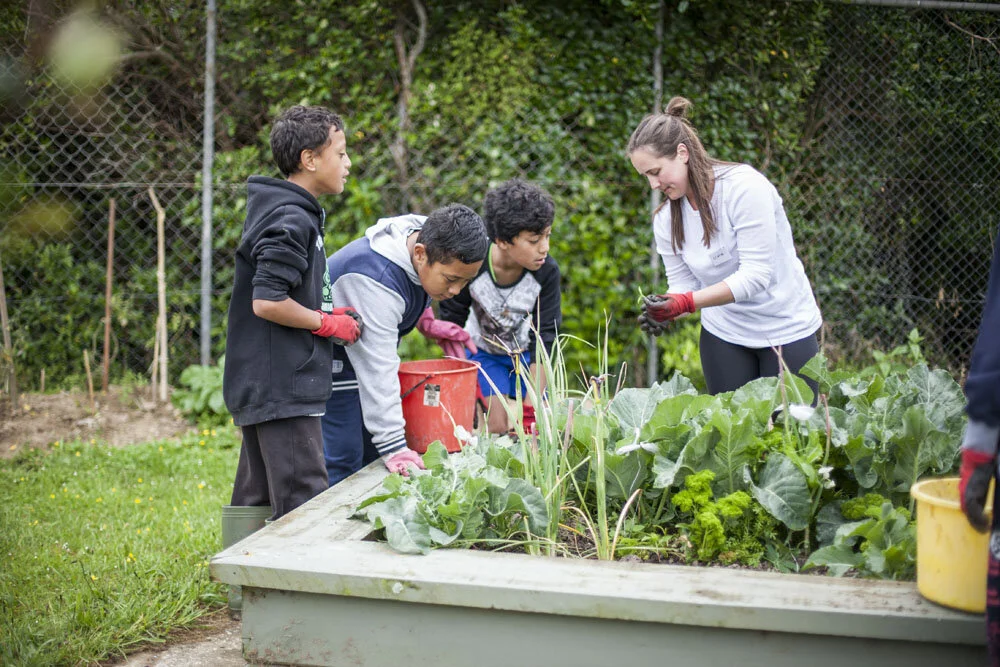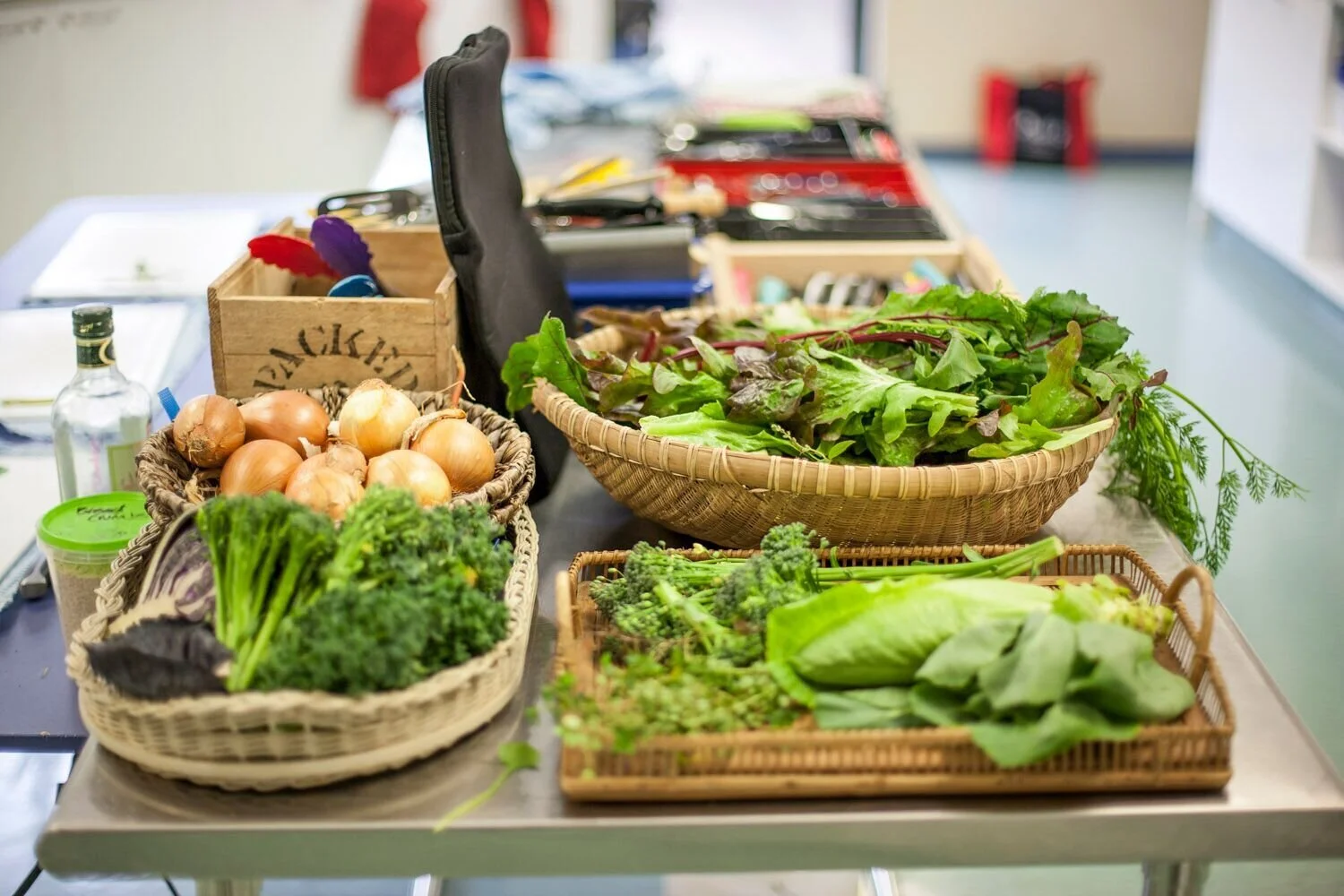Cool as a cucumber: Mindfulness and grounding activities
Here are some creative activities to help tamariki try mindfulness and grounding themselves, which can be useful techniques for feeling calmer. This is the second part in a series; if you’d like to start with some tips on taking deep, calming breaths and quieting your mind, you’ll find those in last week’s post.
These ideas are adapted from a Garden to Table resource that’s often used by schools running the programme. It empowers kids to learn to use the garden for mindfulness and managing big emotions.
8 techniques for mindfulness
Take a Mindfulness break: Sit in a comfortable position and relax your body. Close your eyes and focus on slowly breathing in and out. Try not to think of anything in particular. If a thought pops into your head, just let it go and blow it away with your next breath. Continue slowly breathing in and out.
Body scan: A body scan is just a way of checking in with each part of the body and seeing what it is feeling like and letting that take over the whole of your attention, squeezing out other thoughts. It is easier with your eyes closed and starting with an appropriate script can help you get started. There are many scripts for body scans available. Make sure you use ones that are suitable for children and explain any unfamiliar vocabulary for them (for example, terminology such as sensation and reconnect). Here’s one to try.
Garden gratitude: People who can express gratitude are shown to have increased happiness. Ask tamariki to sit comfortably with their eyes closed and take them through a breathing exercise such as flower breathing to focus their breath and slow their thoughts. Ask them to imagine walking into a gratitude garden, a place where they can grow things they are thankful for. Their mind is full of gratefulness and their pockets are full of seeds. As they walk through the garden they can plant seeds and acknowledge what they are grateful for. At first, kids might need help to think of things they might be grateful for so you can begin by telling them some things to plant seeds for — perhaps for the person who provided their lunch today, for the blanket that makes their bed a warm place to sleep, or for the sun for shining and letting them go out at playtime. As time goes on, it will be easier for children to think of things they are grateful for. You only need to plant 3-4 seeds each time you follow this activity. At the end, they can imagine the seed germinating and shoots pushing through the soil, reaching up towards the sun and the moon, and then blooming into a myriad of colours. Before you leave the garden, think about what you can do to nurture the plants – water them, feed them with compost and pull out the weeds around them. Quietly pack your tools up and leave the garden before opening your eyes.
Mindful eating: Being present while you are eating is something we often forget to do. You might like to do this when a new season of cherry tomatoes are ready or if you have some fragrant herbs. Get tamariki to hold and look closely at the food in front of them. Ask kids to close their eyes and smell the food closely, noting anything that it reminds them of. Does it remind them of something they have eaten before, or does it give them a feeling of something familiar? Did anything surprise them about the smell? Ask them to put the food in their mouth and concentrate on how it feels on their tongue, what it feels like to bite it, how the taste gets to their tongue, what it actually tastes like. What is familiar, what is unexpected, what is new? Do they know that their nose tastes more than their tongue? Chew slowly, deliberately and swallow gratefully. Can they share their experience and thoughts? Why would this be useful? When is this a useful skill? Should we do it more often? Perhaps we could start morning tea with a minute of silent, mindful eating every day straight after saying our karakia kai? Can we link the mindful eating to gratitude for our food, echoing the sentiments of our karakia kai?
5-4-3-2-1 mindfulness:
Using the space around you to lie or sit still in, focus on
5 things you can see
4 things you can touch
3 things you can hear
2 things you can smell
1 thing you can taste.
You may need to move around to do the last two. Move slowly and calmly. Breathe in deeply as you move around.
Take a Mindful Minute: Take one minute, breathe deeply and fill your mind with what is happening right now. What can you hear? What can you smell? What can you feel? What can you see? What can you taste? Continue for one minute or until you feel calm and relaxed.
Ant safari: Lie face down on the grass. Pretend you are an ant. Keep your head down close to the grass and see the world from the ant’s view. What do you notice? What looks different from down here? Remember to breathe and relax as you notice the world from an ant’s eye view.
Be a kererū: sit comfortably with your eyes closed. Imagine you are a kererū sitting on a high branch. Feel your weight grounding you in the tree. Imagine what you can see, smell, hear, feel and taste as you sit in your tree.
5 ways to practice grounding
Grounding is a mindfulness technique that brings you back to the moment and away from wandering thoughts. It focuses the mind on what is actually happening right now. The following exercises can be useful to use to help tamariki develop their mindfulness skills.
Focus on what you hear, see, smell and feel to bring the attention back to your body.
Stand up tall: Bounce on your toes. Feel your body standing on the Earth. Concentrate on that and feel connected. Sitting or standing up tall is important to align your bones and get your blood and energy moving effectively.
Zoom in, zoom out: Make your hand into a camera lens. Zoom in on something close up that is really beautiful. Take some time to examine it in detail. What makes it beautiful? What do you like about it? Zoom halfway out. The scene in your hand camera lens will be bigger and have more in it. Find something beautiful, still viewing through your camera lens. What makes it beautiful? What do you like about it? Zoom right out. Take in the whole scene around you. Move slowly from side to side like a panorama lens. Think about what makes your world beautiful right now, today.
Run your hands through some soil. Squeeze and crunch a handful of soil and let it fall to the ground. Repeat. Now go and wash your hands for 2 whole minutes, paying attention to how the water feels.
Mashed potatoes: screw your hands into fists, tense your whole body and stamp your feet hard. Relax your entire body. Repeat 3 times.
The final post in this series will give suggested activities for managing big emotions when things are running hot. Until then, kia haumaru (stay safe)!



